In the history of Polish Air Force one of the most important pilots is Czech pilot – Sergeant Josef František. He shot down more enemy planes than any other pilots who fought in the Battle of Britain. Unfortunately, the fate decided to call this bitter and gifted fighter pilot to the Heavenly Squadron far too soon. The mystery of his death is still unsolved today. There are numerous theories. One says that he flew to show off above his sweetheart house and crashed while making victory roll. Another say that he fall asleep during flight due to oxygen installation malfunction or crashed because of mechanical breakdown. Official report states that he died during crash landing. It is almost sure that he did not lose combat with enemy.
 František’s death is an enigma as it happened a day after last squadron’s combat in the Battle of Britain fought on the 7th October 1940. On the 8th October the unit was scrambled to intercept enemy’s fighter-bomber raid. Before they reached the enemy, Spitfires from British squadrons had done it. Polish unit was ordered to return to base. Suddenly František broke and disappeared. It is possible that it did not get Polish pilots attention, although they probably noticed it. Frantisek’s legend says that he was a lone wolf who had problems with subordination. It is said that his favourite tactics was hunting alone, which was tolerated by OC as it was effective. But what was the truth?
František’s death is an enigma as it happened a day after last squadron’s combat in the Battle of Britain fought on the 7th October 1940. On the 8th October the unit was scrambled to intercept enemy’s fighter-bomber raid. Before they reached the enemy, Spitfires from British squadrons had done it. Polish unit was ordered to return to base. Suddenly František broke and disappeared. It is possible that it did not get Polish pilots attention, although they probably noticed it. Frantisek’s legend says that he was a lone wolf who had problems with subordination. It is said that his favourite tactics was hunting alone, which was tolerated by OC as it was effective. But what was the truth?
Czechoslovakia
Josef František was born on the 7th October in Ostlavice, ca 60 km north west of Brno. Since his youth he was interested in technology. He learnt about his passion in his father’s bodyshop, although he was more into engines than body. From 1929 to 1934 he worked in a factory Wikow in Prostějov. In 1934 he joined Czechoslovak Air Force and on 1st October started training in the School of Young Aviation Specialists (Škola pro odborny dorost letectva). Eight months later he finished theoretical part of the course and started flying . On the 1st August 1935 he started military service in the 5th Observation Flight of the 2nd Flying Regiment in Olomunec where he received the title of airman-pilot and the field airman-pilot badge. 14th February 1938 he went to Kbely, near Prague, where he started his fighter pilot training in the training flight of the 4th Flight Regiment which he finshed on the 19th May. After the training he received assignment to 40th Fighter Flight. His service there took place in the last months of free Czechoslovakia. In June and September his unit was moved to forward landing grounds. because Czechoslovak Army was preparing to fight for their country but country’s fate was decided in Munich – leaders of France and Great Britain gave 3rd Reich Sudetenland to save the peace. Frantisek’s flight came back to Kbely where it based until the 15th March 1939 when Czechoslovakia ceased to exist. On the 1st April 1939 svobodnik Josef František left air force. During his service he spent 400 hours in the air and made over 1000 flights
Reconstruction of the most probable markings of the Hurricane R4175/RF-R after delivery to 303 Squadron in August 1940, without squadron insignia on fuselage and roundels on wing udersurfaces. See info box “Markings of the Hurricane R4175/RF-R” in text below. Artwork by Marcin Ciepierski, Arma Hobby.
Poland and France
On the 13th June 1939 Josef František started his wartime adventure. That day, just before midnight, he crossed Polish border. Originally he wanted to go to France, but together with other 92 airmen, decided to stay in Poland. He joined that group on the 25th July while he was boarding the ship to France. He was sent to Air Force Training Centre No 1 in Dęblin where he received the rank of plutonowy.
When the war broke he was in Dęblin where, while sitting it Potez 25 cockpit, he witnessed a Luftwaffe attack on the school. The following days he spent evacuating planes that survived the attack, flying reconnaissance and liaison missions. On the 22nd September he made his last flight in Poland – he flew gen. Strzeminiski’s aide-de-camp to Romania. Three days later he got to the internment camp but the next day he escaped and went to Polish Embassy in Bucarest where he was given new ID. On the 2nd October, at night, Josef František boarded the ship “Dacia” and started his voyage to France.
On the 22nd October he arrived in Le Bourget near Paris where Polish airmen concentrated after their arrival. At that time he wanted to join Czechoslovak unit but after the argument with Czechoslovak officers, who suggested that he and other Czech airmen who fought in Poland were deserters, he decided to stay in the Polish Army. Moreover, he had already made friends with Poles and did not want to make new friends. Also his personality was more Polish than Czech.
On the 3rd February he was assigned to the Polish Air Force Training Depot at Lyon-Bron airbase and a month later to Clermont-Ferrand where he flew planes after they were repaired.
The last entry in his logbook is dated on 16th April 1940 and after this date he did not make any flights. On the 18th June 1940, for the second time in his career, he boarded the ship and sailed to Great Britain.
.
Hurricane Mk I R4175/RF-F, photo taken on 5 September 1940. Clearly visible lighter shade of the national insignia painted with pre-war colours in Gloster factory. Photo from Wojtek Matusiak collection.
Albion
On the 21st June 1940 Josef František got off the ship in Falmouth and went to Blackpool, Lancashire, where Polish Air Force Depot was organized. In Blackpool he received British rank of Sergeant and number 793451. Soon he received an assignment to No 303 Polish fighter squadron which was being formed at Northolt near London. He was one of 156 air and land personnel who were assigned to the unit and came there on the 2nd August. Next day the training started – pilots flew British aircraft, e.g, Miles Master, Miles Magister, Fairey Battle and Hawker Hurricane. The beginning of the process was problematic for some pilots – Polish pilots were used to throttle working the opposite way to British and some of them had not flew planes with retractable landing gear. On the 8th František, flying Hawker Hurricane V7245/RF-M, forgot to lower undercarriage and made a belly landing damaging propeller and aircraft lower surface. Despite such mishaps, training continued. On the 30th August, after P/O Ludwik Paszkiewicz’s famous insubordination during training mission No 303 squadron became operational unit. On the 31st August the unit made its first combat mission. Sgt František flew with Flight B but without any contact with enemy. Similar situation took place the next day.
The First Kill
On the 2nd September, in the afternoon, the squadron scrambled to intercept incoming German raid. Sgt Josef František flew Hawker Hurricane P3975/RF-U. At around 6 pm Polish pilots met Messerschmitts 109 heading homebases. They were in the sun, but Sgt. Jan Rogowski, who was the “Tail end Charlie”, together with Czech pilot, saw the danger and warned his colleagues. In the fight which František managed to shot down one of German fighters, although German pilot tried to flee to France.
On the 3rd September took part in two missions. In the first one he was attacked by a Spitfire but managed to avoid friendly fire.During the second flight he saw an aircraft which he recognized as He 113. He went for it and shot it down. German plane, Bf 109 of 9./JG51 hit the sea, but the pilot survived.
Another photo of František’s aeroplane taken on 5 September 1940. Note light shade of rouundel on wing and missing squadron insignia on fuselage. Photo: Wojtek Matusiak collection.
The First Double
On the 5th September 9 Hurricanes of “Three Oh Three” scrambled at 2.40 pm, led by British CO of the unit – S/L Ronald Kellet. František flew Hurricane R4175/RF-R in the Blue Section, together with F/O Łapkowski and F/L Atholl Forbes. At around 3 pm pilots noticed anti-aircraft fire shooting at Heinkels 111s that were bombing oil tanks in Thameshaven. Heinkels had very strong fighter cover of Messerschmitts 109 from JG 53 and JG 54. S/L Kellet led the squadron to attack the centre of German formation but enemy’s fighters were faster. One of them attacked František but missed and flew past him. František immediately attacked enemy shooting at Messerschmitt from the distance of 150 metres. Then he attacked bombers hitting one of them in the engine and cockpit. He saw it falling in flames over the Thames Estuary. His victims were, probably, one of Bf 109s of JG 54. It is hard to say who was František’s second victim as KG 53 lots 2 Heinkels shot down and pilots of three RAF squadrons (Nos 17, 41 and 303) claimed shooting down Heinkels. František’s RF-R was damaged and had to be repaired.
Acedom
On the 6th September No 303 squadron fought the hardest combat during the Battle of Britain. Nine Hurrricanes took off at 8.40 am and flew towards Kent. There the pilots met German raid, consisting 50 bombers He 111s and Ju 88s protected by 200 fighters, heading Thameshaven. Unfortunately the squadron was climbing slowly and German fighter pilots used advantage and attacked Poles. The squadron lost six aircraft and four pilots, including Polish CO S/L Krasnodębski, had to go to hospitals. During this engagement Sgt František shot down one of attacking Messerschmitts, although moments later his plane was hit by another enemy. In his report he wrote that opened fire from 150 yards. He shot two bursts. Probably his victim was Oblt. Albert Waller of 3./JG52 who managed to leave the plane but was taken prisoner. When František landed back at Northolt his Hurricane RF-R again looked really bad – the tail was severely damaged and ailerons practically did not work.
For a next few days František was grounded because there were not enough planes for all pilots. However, on the 7th September he was recommended by S/L Kellet to Distinguished Flying Medal. The recommendation was accepted by RAF Northolt commander G/Cpt Stanley Vincent and AVM Keith Park.
Markings of the Hurricane R4175/RF-R
Hurricane R4175 was produced at the Gloster Aircraft Company Ltd factory in the second half of Block 2 / G series consisting of 100 aircraft completed between May and July or August 1940. What made the aeroplanes produced in this factory stand out were the lighter shades of national insignia: roundels and fin flash. The Gloster factory used supplies of pre-war paints until at last September 1940.
The aircraft did not have a factory painted roundels at the bottom of the wings following the marking standard at the time of production. The machine was used only in 303 Squadron, after August 9, 1940, and lost on October 8 with the Sgt Josef Frantisek. In the pictures included in the content of the article above (from September 5, 1940) clearly visible roundels and fin flash without the emblem of 303 Squadron.
On August 11, an order was issued to paint the roundels at undersurfaces of the wings, and their painting was started from 18 August. The roundels on R4175 were most probably already painted in the unit, using standard, dark colours of markings. It is difficult to say whether at this moment or later the emblem of the squadron was painted in a standard place, under the antenna mast. Dark roundels on the bottom of the wings and the insignia of 303 Squadron can be seen in the pictures below in the text. It is worth comparing the shades of the fin flash markings and the undersurface roundels between the aircraft R4175 / RF-R and the V7235 / RF-M visible in the background (Block 4, production of Hawker plants).
Suggested reading
-
Poles in Defence of Britain by R. Gretzyngier, Grub Street, Londyn 2001
- 303. Dywizjon Myśliwski w bitwie o Wielką Brytanię, J. Kutzner, wyd Rytm Warszawa 2010
- http://www.k5083.mistral.co.uk/APS.HTM
The hardest combat
On the 9th September, he returned to combat missions. After rather calm day Germans sent 60 Heinkels 111s, 20 Messerschmitts 110s and 60 Messerschmitts 109 to attack Royal Aircraft Establishment Farnborough. British command scrambled around 100 fighters that managed to intercept the bombers. Germans started releasing bombs and heading back to France when another raid entered the scene. This time there were 40 Junkers Ju 88s, 25 Messerschmitts 110s and 80 Messerschmitts 109. Additionally, other German fighters were flying “Freie Jagd” missions along the route.
In this combat Sgt František, Flying Hurricane P3975/RF-U shot down two enemy aircraft. First was Bf 109 that was attacking another Hurricane. Czech pilot shot a burst from 100 yards aiming at engine and another at the cockpit. Messerschmitt hit the earth. Then he attacked a Heinkel 111 but German fighters came to help and forced Frantisek to seek cover in clouds. A few minutes later he left the shelter and almost collided with another He 111. According to his own words, he shot a deadly burst from 10 yards but was only able to see that bomber engine and cockpit were in flames as he was again attacked by German fighters. Again he hid in the clouds and headed France to lose enemies. However, while over the Channel he was found and his plane was hit. German bullets damaged cooler which forced him to return and land in the cabbage field. Fortunately he did not sustained any injuries. After a few hours he returned to his base. His victims were probably Uffz Karl Born of 7./JG27 and the He 111 which crash landed in France with two of the crew wounded and one killed.
Photo of two famous František Hurricanes Mk I. In the background V7235/RF-M, which he has landed forgotting to drop undercarriage on 8 August 1940. In the foreground is the R4175/RF-R on which he has achieved nine of his seventeen kills in Battle of Britain. Noteworthy is difference of national insignia shades. RF-R has lighter shade of fin-flash (painted by Gloster factory) than underwing roundels (paintedin unit with stdandart colours). RF-M has all insignia painted with standard colours. Wojtek Matusiak collection photo.
Hat trick
The 11th September witnesed another large struggle over England. Initially nothing indicated serious aerial operations as morning was very foggy. However, during the day winds cleaned the air and Germans immediately sent Luftwaffe to attack British soil. At around 3 pm British radars detected incoming raid. Germans sent 150 He 111s of KGs 1, 26 and 55 protected by 400 Bf 109s of JGs 26, 27, 51, 53, 54 and I.(J)/LG2 and 40 Bf 110s of ZGs 26, 76 and V.(Z)/LG1. Their targets were London Docks and the Woolwich Arsenal. The RAF sent 90 fighters to counter that attack. 12 Hurricanes scrambled to join the battle and Polish pilots claimed 16 confirmed kills and 1 probable. But they lost 4 aircraft and two pilots killed.
At the beginning of the engagement Sgt. František was attacked by two Bf 109s but he managed to avoid that attack and attacked one of his attackers and shot him down in flames. His next victim was He 111. František shot a burst into bomber engine which burst in flames and the plane dived into the sea. His last kill was a Bf 109 shot down while František was flying back to base. Unfortunately he had to break his attack as his ammunition ran out but he saw Messerschmitt emitting smoke. As there were so many aircraft involved in the engagement it is extremely difficult to say who were Frantisek’s victims.
Josef Frantisek and Hurricane V7289/RF-S, flown on 11th September, when he achieved three kills. Photo from Wojtek Matusiak collection.
During the Battle of Britain Day, the 15th September 1940, No 303 Squadron flew two missions but Josef František, flying P3089/RF-P, only took part in one of them but he shot down one Bf 110. Polish squadron attacked bombers but German cover attacked them before they reached the target. František attacked two Bf 110s but he decided to concentrate on one of them, leaving the other to another RAF pilot. He shot it down with two bursts. His victim was, probably, Bf 110 C-3 of 14./LG1.
On the 18th September Gen. Władysław Sikorski, Polish Prime Minister and Commander in Chief, visited RAF Northolt. Sgt. Josef František received Virtuti Militari Cross 5th Class – the only decoration he received personally. At 12.20 12 Hurricanes scrambled to intercept detected enemy. It was a single Dornier 215 on photo- and weather reconnaisance mission over southern England. Frantisek shot a Bf 109 that was covering the bomber. Dornier was also shot down by other Polish pilots.
Close vbiew of the Hurricane R4175/RF-R, visible different colours on fin flash and roundels as well as aeroplane weathering. Photo from collection of Wojtek Matusiak.
Further kills
The 26th of September was another lucky day for Czech pilot. On that day Germans successfully attacked the Supermarine plant in Woolston that was severely damaged. This time defenders failed and first British fighters started arriving when bombardment commenced. František in the cockpit of Hurricane R4175/RF-R claimed two bombers shot down – one over England and the other, after long chase, over French coast.
The next day witnessed Frantisek’s two kills. Between 8.00 and 9.00 am he took part in an engagement and claimed one He 111 and one Bf 110. Especially the second victory was quite interesting. At the beginning Czech pilot damaged one of enemy’s engines. German pilot waved his plane wings to show that he wanted to surrender and set the course towards Gatwick. But just before Messerschmitt wheels touched the ground German pilot accelerated. Unfortunately for him, František was behind Messerschmitt and he pressed the trigger – finishing German’s escape. After the combat Czech pilot landed and gathered a piece of German parachute as a trophy.
On the 27th September 1940, S/L Kellet recommended the second DFM for František and it was accepted, even by His Majesty the King George VI.
Three days later František claimed his last enemy – near Brooklands he attacked 6 Bf 109s and shot down one of them when German pilot broke formation. Czech shot several bursts and Messerschmitt, emitting smoke, dived into the clouds.
Hurricane R4175/RF-R sgt Josef František September/October 1940. Aeroplane with painted 303 Squadron insignia under antenna mast nad dark shade roundels on wing undersurfaces. František has died when fling this aeroplane on 8th October 1940. Artowrk by Marcin Ciepierski, Arma Hobby.
Death
At the turn of September and October František ’s friends and colleagues noticed that something was wrong with his behavior. He became more nervous which was caused by constant flying and fatigue. He and other of his colleagues from No 303 Squadron badly needed the rest. The squadron fought for over the month without any breaks. Same was seen at RAF headquarters and it was decided that it would be moved to RAF Leconfield. The “Three-Oh-Three” left RAF Northolt on the 11th October…Sgt. František was not present.
On 8th September, as described in the introduction, František broke away from the formation and dissapeared. The squadron was informed that his Hurricane crashed in Cuddington Way, Sutton near London. Pilot’s body was found outside the cockpit.
Epilogue
Sgt Josef František was buried in the Northwood Cementary among his Polish brothers in arms. Posthumously he got promotions three times. On 16th July 1941 he was promoted Lieutenant of Polish Air Force, on the 1st February Czech rank Nadporucik and on the 1st June 1991 he was promoted Plukovnik of Czech Air Force.
His death was a huge loss for both Polish and Czechoslovak Air Forces. He was gifted fighter pilot who might have gain much more if the death had not taken him. Although he might have had some problems because of his discipline issues.
He was not a Pole but his personality caused that he grew accustomed to Polish airmen. He has also been described in Arkady Fiedler’s book and both films about “Three-Oh-Three” that hit the screens earlier this year.
Karel Kuttelwascher – the most effective Hurricane night fighter pilot
Acknowledgments
I would like to say thank you to Mr Grzegorz Mazurowski and Mr Wojtek Matusiak for help in preparation on this article
Advertisement
Markings of the Hurricane Mk I flown by Josef Frantisek are included in Hurricane Mk I Expert Set model kit in Arma Hobby internet shop
An enthusiast of air war during the Battle of Britain, over North Africa and Italy, over South East Asia and France in 1940. In free time builds models in 1/72 scale, and from time to time in 1/48 scale.
This post is also available in:
 polski
polski


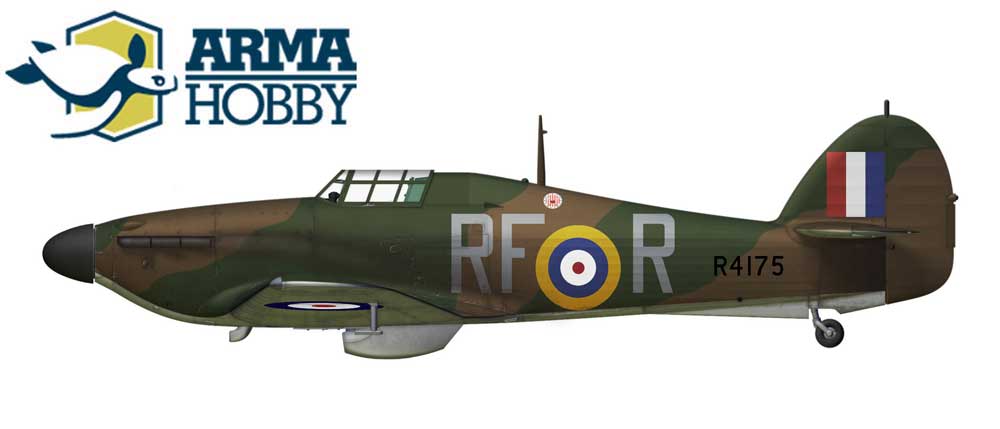
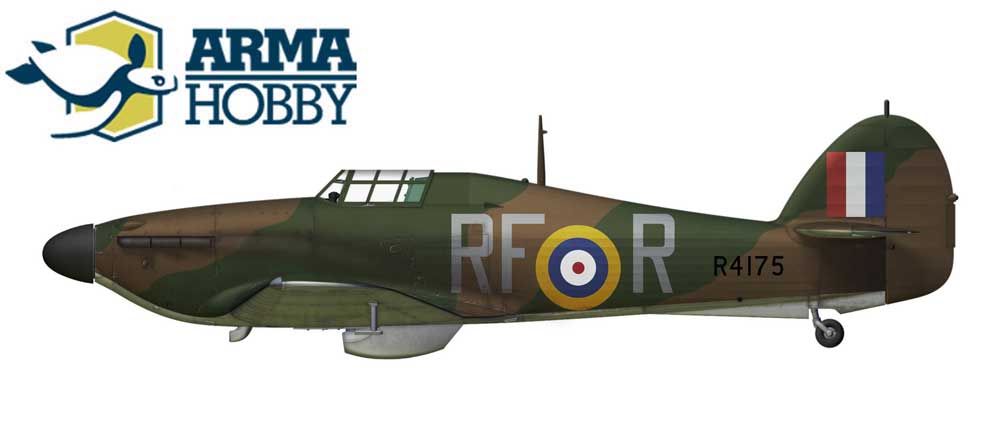
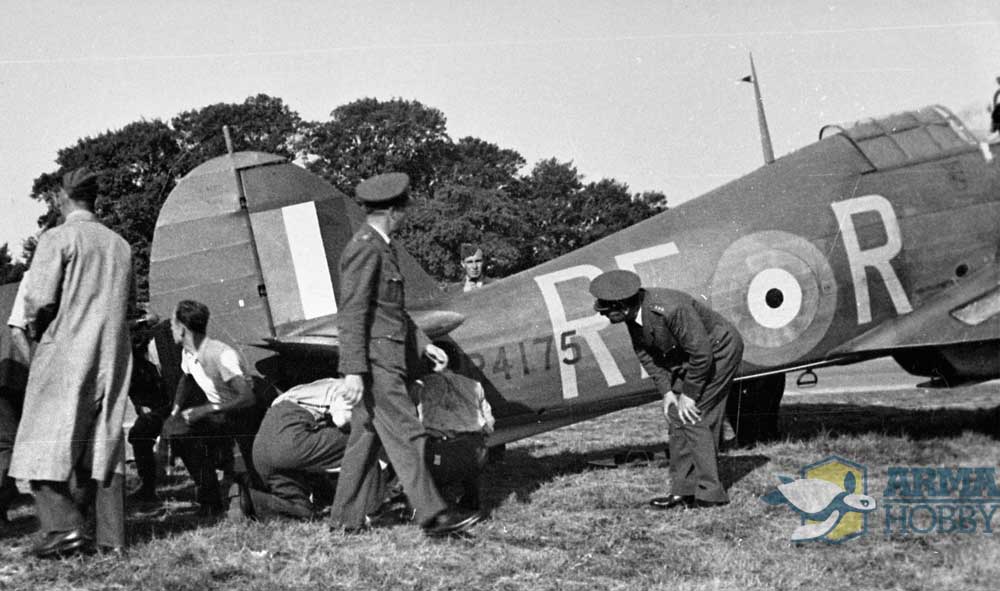



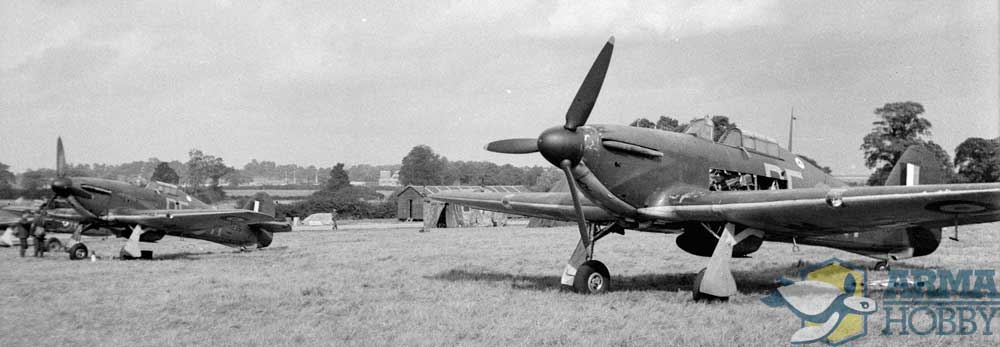
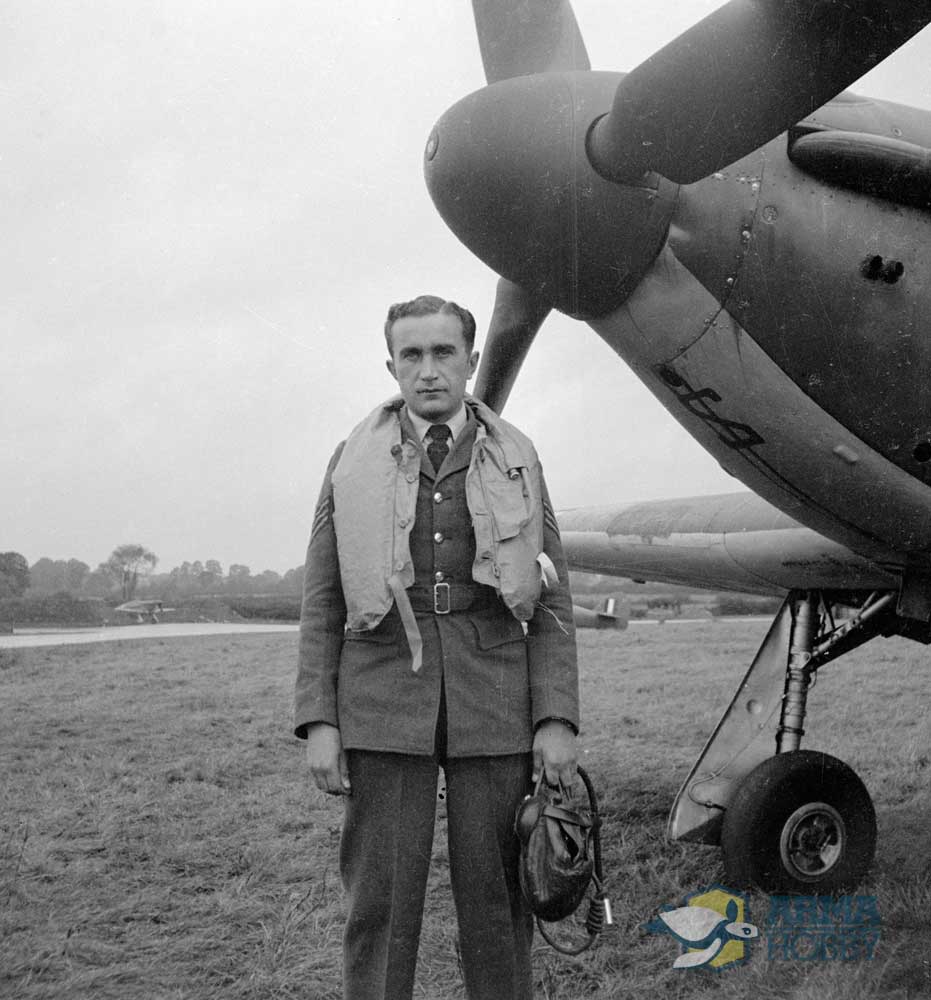
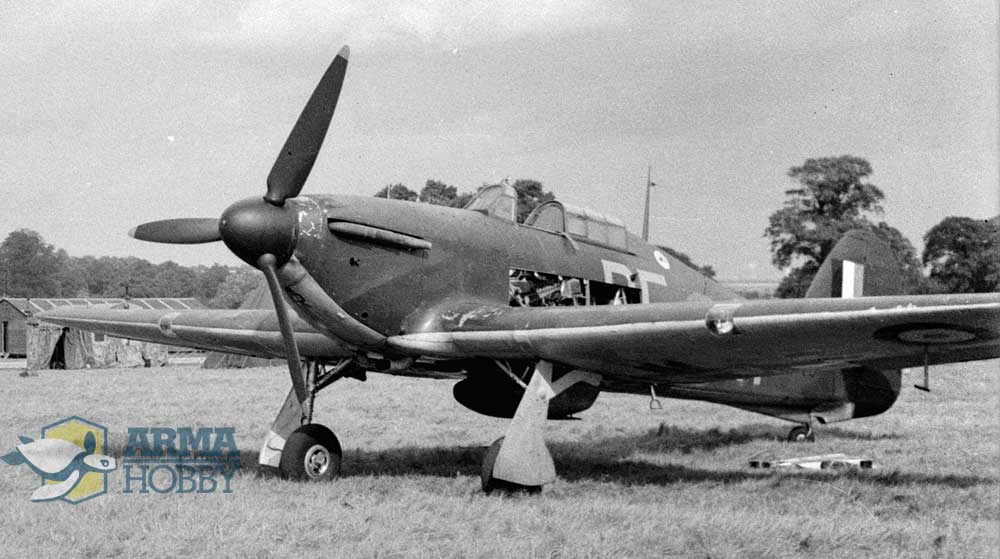
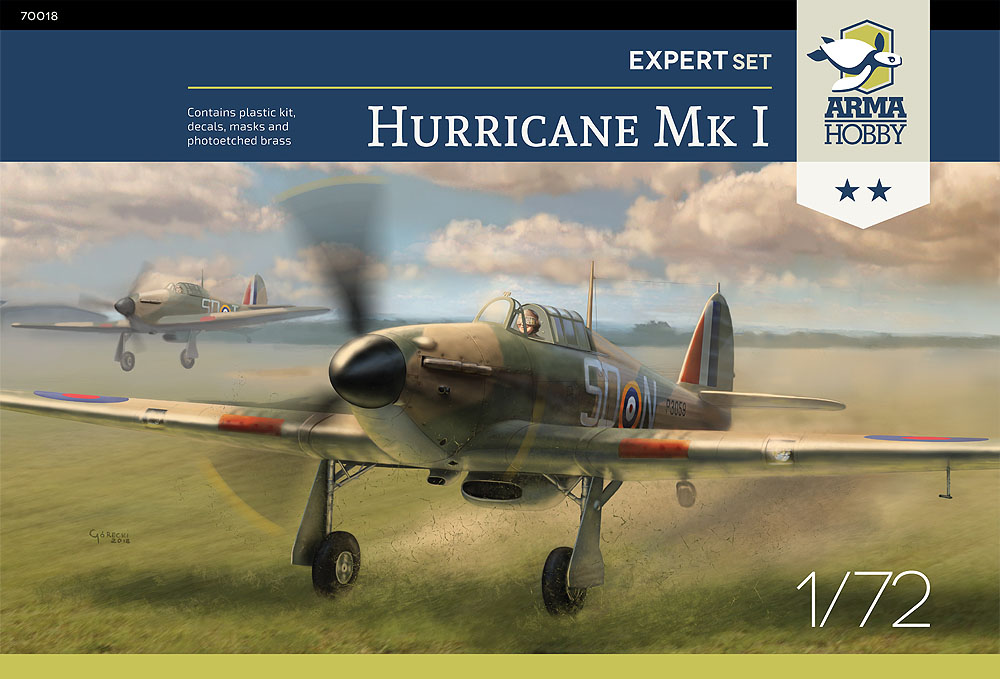

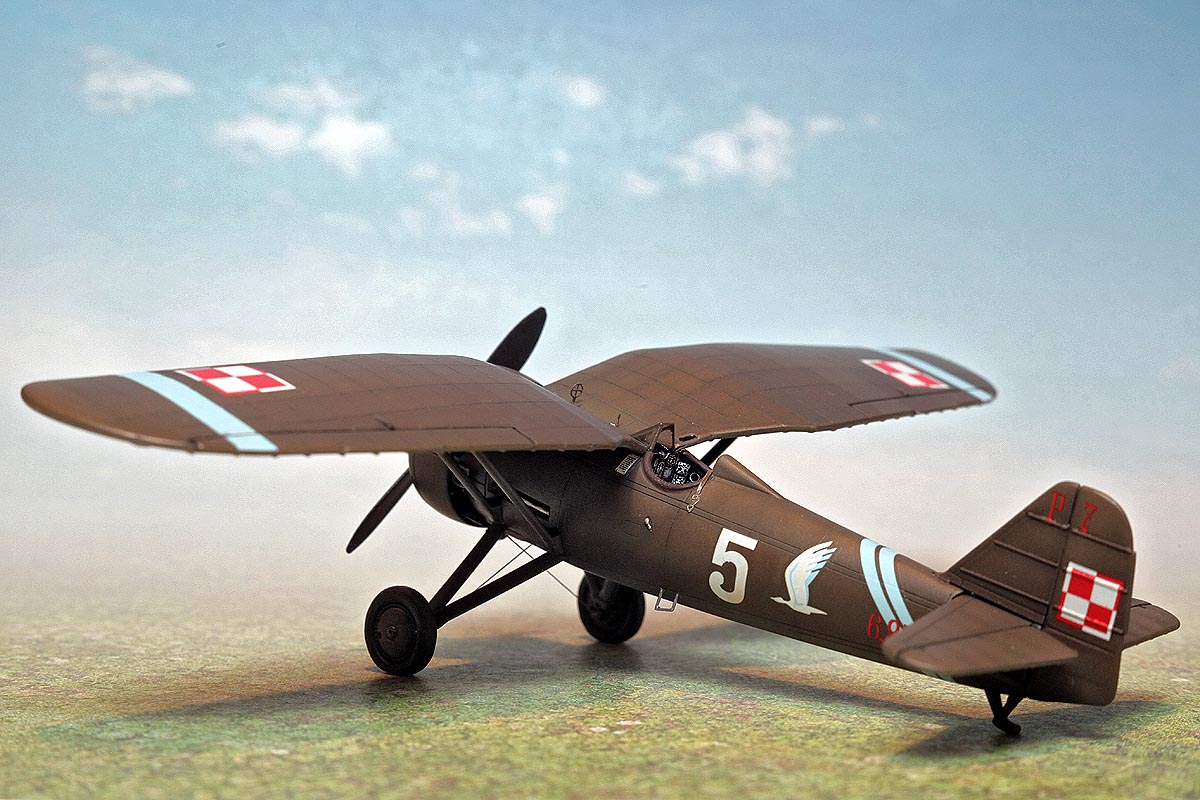
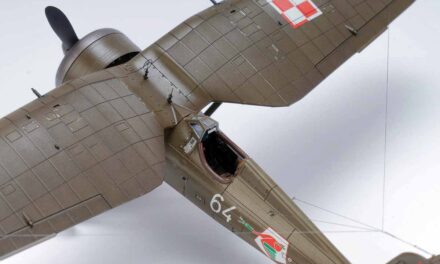

Czesc! Thank you very much for this title! We in CZ are proud on Josef and on your 303rd sq as well! I made kits 25 years ago, but regtet to say with no hurry. Now, I am just making wooden model of hurry I finally – now for my son, 5 years old, tell him bedtime stories about our Frantisek as well. Pozdrawiamy przyjaciol z Polski! Ahoj! Zdenek / Praha
Thank you Zdenek! You may try to build Hurricane 1/72 kit with your son if you wish?
This one is approx 1/32 made just of piece of wooden bar and plywood. Daughter will get Mustang-D. But for sure another planes will follow. They both love it 🙂